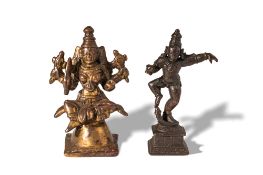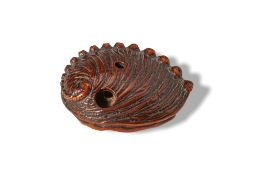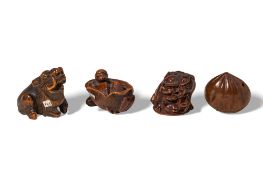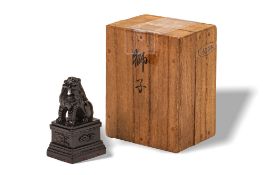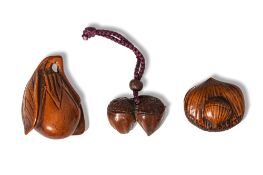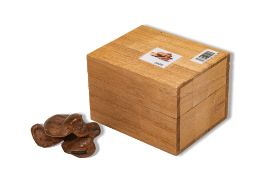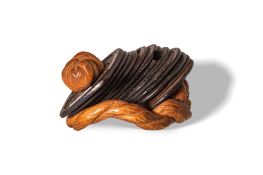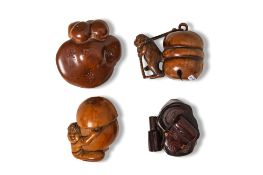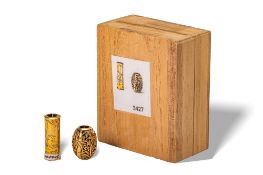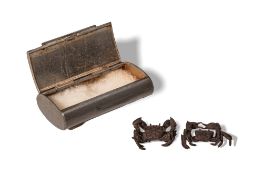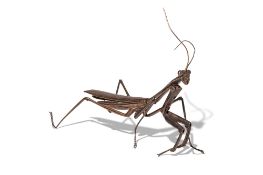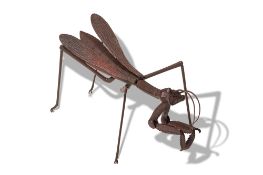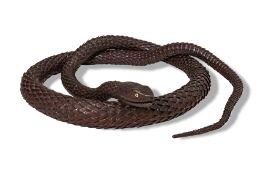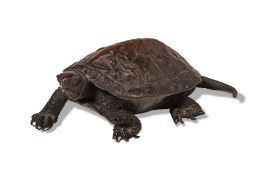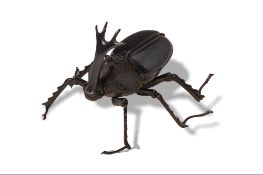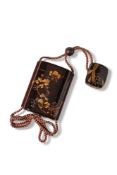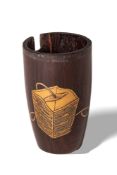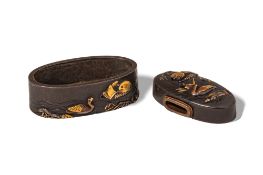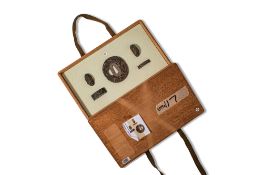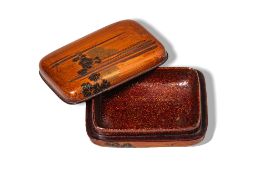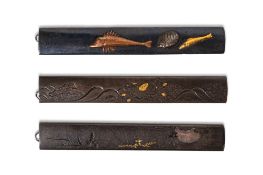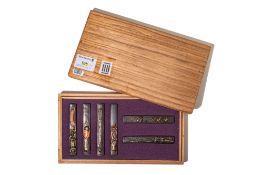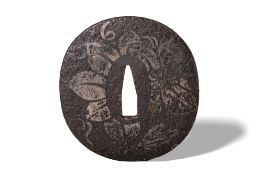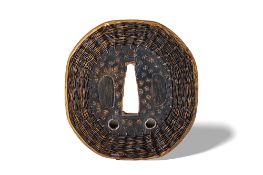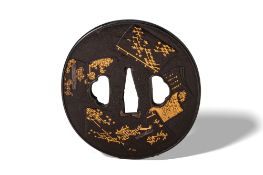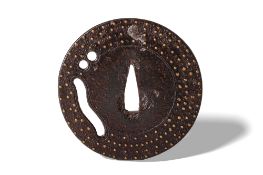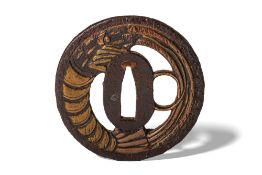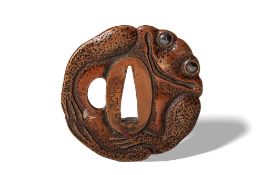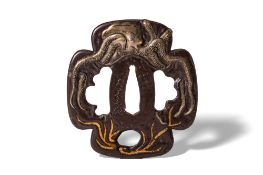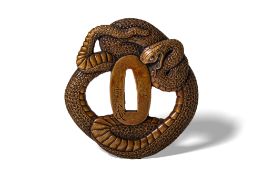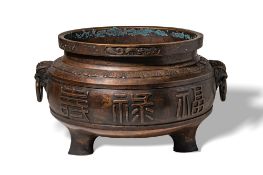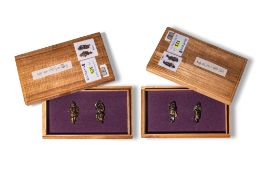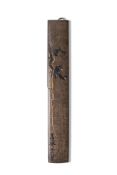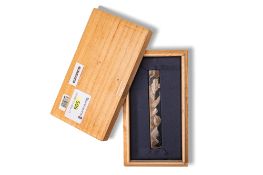Verfeinern Sie Ihre Suche
Auktionshaus-Kategorie
Kategorie
- China (115)
- Japan (64)
- Porzellan (7)
- Waffen, Rüstungen & Militaria (7)
- Ethnographie & Stammeskunst (4)
- Keramik, Fayencen (4)
- Varia (4)
- Druckgrafiken & Multiples (2)
- Gemälde & Mischtechniken (2)
- Indien (2)
- Aquarelle (1)
- Bücher, Manuskripte & Schriften (1)
- Großuhren (1)
- Historische Baustoffe & Elemente (1)
- Islam (1)
- Möbel (1)
- Musikinstrumente & Memorabilia (1)
- Skulpturen (1)
- Vintage Fashion (1)
- Wissenschaftliche Instrumente (1)
Künstler / Marke
- Qing (44)
- Qing Dynasty (44)
- Edo (38)
- Edo Period (38)
- Song (16)
- Tibetan (16)
- Meiji (10)
- Ming (10)
- Ming Dynasty (10)
- Meiji Period (9)
- Kangxi (6)
- Tang (6)
- Tang Dynasty (6)
- Han (5)
- Han Dynasty (5)
- Longquan Celadon (4)
- Qin (1)
- Qingbai Ware (1)
- Shang (1)
- Shang Dynasty (1)
- Tongzhi Porcelain (1)
- Yue Ware (1)
- Liste
- Galerie
-
221 Los(e)/Seite
TIBETAN BRONZE SURGICAL TOOLS
Ca. AD 1800 - 1900. A rare Tibetan surgical kit housed in a vividly painted wooden box, the lid decorated in polychrome with auspicious motifs and...
Ca. AD 1800 - 1900. A detailed repoussé panel depicting Vajrapani, the wrathful protector and bodhisattva of power, shown in dynamic posture tramp...
Ca. AD 1100 or later. A group of five Hindu deities cast in openwork, seated in a row upon a raised pedestal platform. The central figure is likel...
Ca. AD 1700 - 1800. A gilded Buddha finely cast seated in dhyanasana on a double-lotus pedestal above a square plinth. His serene expression is fr...
TIBETAN BRONZE FIGURE OF A COW
Ca. AD 1800 - 2000. A finely cast and richly adorned bronze figure of a recumbent cow, most likely representing Nandi, the sacred bull and devoted...
Ca. AD 1800 - 2000. A bronze figure of Vajrapani, modelled in a dynamic posture with one foot planted and the other raised in mid-step, brandishin...
KASHMIR STYLE STANDING VAJRAPANI
Ca. AD 1800 - 1900. A standing Vajrapani cast in solid bronze, upon a lotus pedestal, his right hand raised and holding a vajra, symbolising the p...
INDIAN BRONZE FOUR ARMED GANESH
Ca. AD 1800 - 1900. An elephant-headed deity is portrayed in a lively dance pose (nritya), balancing on one leg atop a double-lotus plinth above a...
TWO INDIAN BRONZE DEITIES
Ca. AD 1300 - 1900. A pair of Indian bronze deities, possibly Durga, seated in lalitasana atop a recumbent buffalo mount, holding attributes, with...
TIBETAN IRON PHURBA
Ca. AD 1600 - 1900. An iron ritual dagger (phurba) cast in classic three-sided form, with a finely faceted blade tapering to a sharp point. The sh...
GROUP OF TIBETAN TSHA TSHA
Ca. AD 1300 - 1800. A group of six votive plaques moulded in terracotta and clay, depicting various forms of the Buddha and bodhisattvas. The grou...
GROUP OF TIBETAN TSHA TSHA
Ca. AD 1300 - 1800. A group of six moulded clay votive plaques (tsha tsha), each impressed with Buddhist deities and ritual figures in high relief...
GROUP OF TIBETAN MALA BEADS
Ca. AD 1800 - 1900. A group of three traditional Tibetan prayer beads (malas). Each strand terminates in original or early thread, leather, and tr...
KHMER BRONZE BUDDHA HEAD
Ca. AD 1800 - 2000. A bronze head of Buddha finely cast with serene and symmetrical facial features, including almond-shaped eyes beneath arched b...
GROUP OF TIBETAN THOGCHAGS
Ca. AD 1900 - 2000 or earlier. A group comprising seven cast copper alloy thogchags of varied form and iconography, including: a large solar medal...
GROUP OF TIBETAN THOGCHAGS
Ca. AD 1800 - 1900 or earlier. An assemblage of eight cast bronze thogchags including a large openwork plaque depicting sinuous entwined dragons o...
Ca. AD 1700 - 1900. A group comprising a finely cast Tibetan ritual bell (ghanta), the grip surmounted by a half-vajra finial and crowned head of ...
Ca. AD 1800 - 2000. A bronze Buddha cast and seated in dhyanasana upon a double-lotus pedestal with beaded rims. The serene face is framed by elon...
SINO-TIBETAN BRONZE TSONGKHAPA
Ca. 19th century AD.A Tsongkhapa figure, seated upon a lotus base. The figure is a Tibetan Buddhist scholar, known for forming the Gelug school of...
SINO-TIBETAN SEATED BUDDHA
Qing Dynasty, Ca. AD 1644-1912. A bronze Bodhisattva, adorned with an elaborate crown and armlets, the serene figure is seated upon a finely retic...
CHINESE BRONZE BUDDHA
Late Qing Dynasty, Ca. AD 1644-1912. A bronze Buddha seated on a lotus base, holding a lotus flower, with a swastika on the chest. The swastika is...
Ca. 17th - 18th century AD.A beautifully carved wooden Shakyamuni. Depicted seated in the padmasana lotus position, holding an alms bowl, with his...
NEPALESE COPPER PRAJNAPARAMITA
Ca. 17th century AD.A figure of the seated Prajnaparamita, also known as the female Buddha. She is the embodiment of wisdom and is considered as t...
Ca. AD 1850. A finely carved wood netsuke in the form of an abalone shell, detailed with naturalistic ridges and textures, signed Tadatoshi. Size:...
GROUP OF FOUR JAPANESE NETSUKE
Ca. AD 1700 - 1900. A group of four wood carved netsuke, comprising a boar with incised fur, a monkey seated beside an open chestnut, a fierce shi...
Ca. AD 1800 - 1900. A netsuke finely carved from ebony as a seated karashishi (Buddhist lion-dog) on a square plinth base, its muscular form and f...
GROUP OF THREE JAPANESE NETSUKE
Ca. AD 1700 - 1900. A group of three wood carved netsuke, comprising a persimmon fruit with carved leaf, a pair of acorns tied with purple cord, a...
JAPANESE SORAMAME NETSUKE
Ca. AD 1800 - 1900. A netsuke finely carved as four soramame (broad beans) resting in a naturalistic cluster. The composition is compact yet dynam...
JAPANESE NETSUKE SHAPED AS COINS
Edo Period, Ca. AD 1603 - 1868. A wood carved netsuke in the form of a string of coins. Size: 40mm x 35mm; Weight: 12g. Provenance: Prince collect...
GROUP OF FOUR JAPANESE NETSUKE
Ca. AD 1700 - 1900. A group of four wood carved netsuke depicting naturalistic subjects including two mushrooms, one signed Toyomasa, a monkey car...
SET OF JAPANESE GOLD OJIME BEADS
Ca. AD 1800 - 1900. A set of gold ojime beads, one of oval form carved in relief with clumps of chrysanthemum (kiku), the other of cylindrical for...
Meiji Period, Ca. AD 1868 - 1912. A pair of finely crafted miniature articulated iron crabs, naturalistically detailed with movable limbs and claw...
Meiji Period, Ca. AD 1868 - 1912. A finely crafted Japanese articulated model of a mantis, realistically rendered in silver with exceptional atten...
JAPANESE ARTICULATED MANTIS
Meiji Period, Ca. AD 1868 - 1912. An articulated iron model of a mantis, naturalistically constructed with finely hammered plates joined internall...
JAPANESE ARTICULATED BRONZE CRAB
Meiji Period, Ca. AD 1868 - 1912. A finely articulated iron model of a crab (jizai okimono), constructed from multiple individually jointed segmen...
Ca. AD 1900 - 2000. An articulated lobster naturalistically constructed from numerous hammered copper plates, intricately jointed within the body ...
Ca. AD 1900 - 2000. An iron snake constructed from numerous hammered iron plates joined internally to create a fully articulated body. The surface...
JAPANESE BRONZE TURTLE
Meiji Period, Ca. AD 1868 - 1912. A finely cast Japanese bronze model of a turtle, realistically rendered with meticulous detail to the shell, lim...
JAPANESE IRON ARTICULATED BEETLE
Meiji Period, Ca. AD 1868 - 1912. A finely articulated iron model of a kabutomushi (rhinoceros beetle), crafted with naturalistic detail. The beet...
Edo Period, Ca. AD 1603 - 1868. An inro finely decorated in red, gold, and black hiramaki-e, with accents of sabiji, silver and gold kanshitsu (dr...
JAPANESE LACQUER THIMBLE
Ca. AD 1700 - 1900. A thimble (possibly a writing accessory or tool handle), made from dark polished wood and decorated in gold and brown maki-e l...
Ca. AD 1800 - 1900. A fine shibuichi fuchi-gashira set, intricately decorated with a serene scene of mandarin ducks swimming. Size: 35-38mm x 16-2...
SET OF JAPANESE FUCHI-GASHIRA
Ca. AD 1700 - 1900. A set of fuchi-gashira of shakudo cast and inlaid in iroe takazogan (multicolored high-relief inlay) with a richly adorned mah...
Ca. AD 1800 - 1900. A part set of sword mounts comprising a tsuba of oval form, with designs of breaking waves with gilt sprays on both sides, sig...
Ca. AD 1800 - 1900. An incense box of rectangular form, lacquered with chrysanthemum blooms and foliage in gold takamaki-e and ishimeji-nuri, rest...
GROUP OF JAPANESE KOZUKAS
Edo Period, Ca. AD 1603 - 1868. A group of three Japanese kozuka, each decorated in varying mixed-metal techniques. One featuring a gilt and coppe...
Ca. AD 1700 - 1900. A boxed set of six shiiremono kozuka, each of mixed-metal construction, skillfully cast with a variety of Western-themed motif...
JAPANESE IRON TSUBA WITH FLORALS
Edo Period, Ca. AD 1603 - 1868. An iron tsuba of rounded oval form, finely decorated in silver inlay with a large floral blossom and foliage radia...
Edo Period, Ca. AD 1603 - 1868. An iron tsuba of rounded octagonal form, featuring a finely rendered woven motif along the rim. The central panel ...
JAPANESE IRON TSUBA WITH BOOKS
Edo Period, Ca. AD 1603 - 1868. A finely crafted round iron tsuba featuring multiple book motifs inlaid with gold. Each book is embellished with i...
Edo Period, Ca. AD 1603 - 1868. A round iron tsuba featuring a wide rim decorated with evenly spaced gilt dots, creating a textured and luminous b...
Edo Period, Ca. AD 1603 - 1868. An iron tsuba boldly inlaid with gold and copper to depict a stylised shrimp coiled around the seppa-dai. Size: 78...
JAPANESE TSUBA WITH A FROG
Edo Period, Ca. AD 1603 - 1868. A tsuba boldly cast in the naturalistic shape of a frog, its body textured to mimic the mottled skin of the amphib...
Edo Period, Ca. AD 1603 - 1868. An iron tsuba of mokko form, finely detailed with a depiction of an octopus stretching its tentacles across the ri...
Edo Period, Ca. AD 1603 - 1868. An iron tsuba skillfully formed in the shape of a coiled snake. The serpent wraps sinuously around the central ape...
JAPANESE BRONZE CENSER
Meiji Period, Ca. AD 1868 - 1912. A bronze censer of deep, rounded form supported on three short legs, the body cast in high relief with large cha...
GROUP OF JAPANESE MENUKI
Ca. AD 1700 - 1900. A group consisting of two pairs of menuki. Each pair of finely cast and gold-accented menuki, in the form of foreign figures. ...
Yokoya School, Ca. AD 1800 - 1900. A Shibuichi kozuka deeply engraved with a bird perched on a withered branch entwined with a creeper, after a pa...
JAPANESE EROTIC SHIBUICHI KOZUKA
Meiji Period, Ca. AD 1868 - 1912. A kozuka inlaid in silver and shakudo honzōgan with a bold and intimate shunga depiction of two lovers in embrac...
Ca. AD 1700 - 1900. A kozuka made of shakudō (a darkened copper-gold alloy), and it is decorated in iroe takazōgan (multi-metal inlay in high reli...
-
221 Los(e)/Seite











